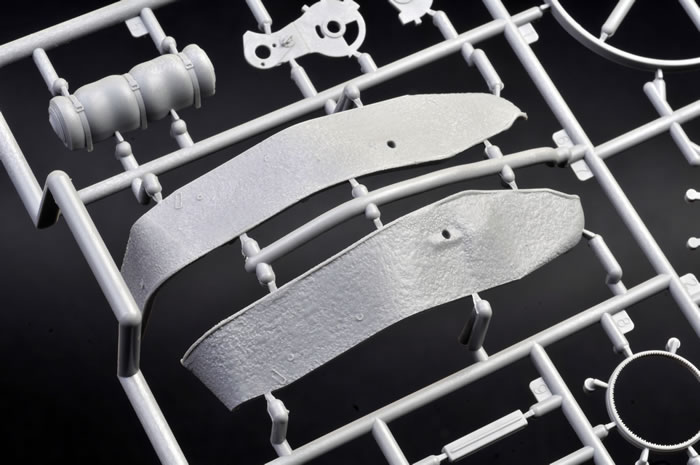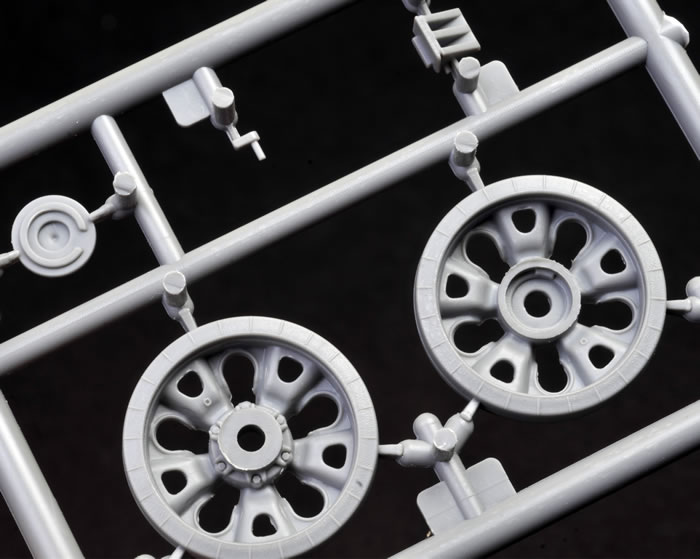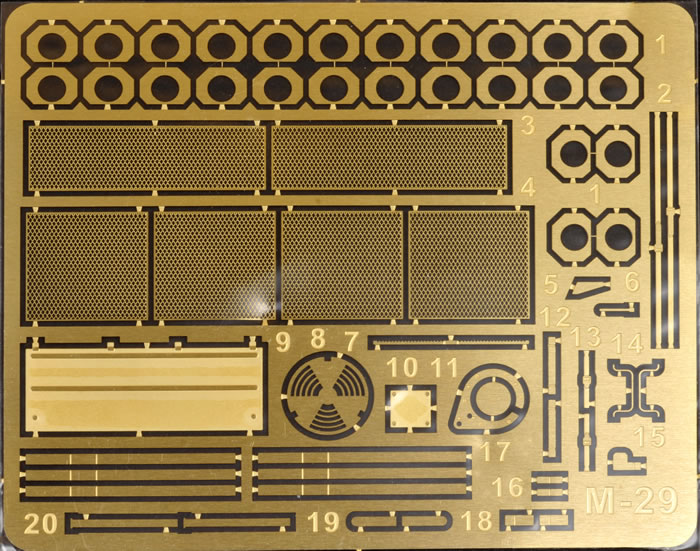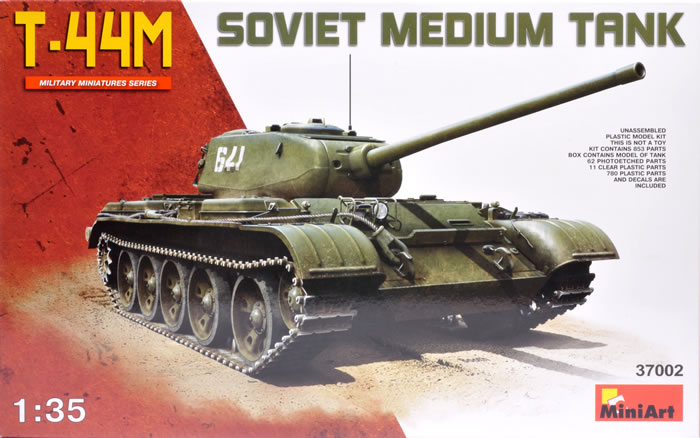|
|
|
|
T-44M Soviet Medium Tank
MiniArt, 1/35 scale
Reviewed by Luke Pitt
Summary
|
Stock No. |
MiniArt 1/35 scale Kit No. 37002; T-44M Soviet Medium Tank |
|
Contents and Media: |
780 plastic parts over 81 sprues; 11 clear parts; 62 photoetched parts; markings for four vehicles. |
|
Price: |
AUD$62.00 plus postage available online from Creative Models Australia |
|
Scale: |
1/35 |
|
Review Type: |
First Look |
|
Advantages: |
High level of detail; complete interior; excellent moulding; interesting subject that has not been kitted before; good value. |
|
Disadvantages: |
Any colour you want as long as it's green. |
|
Recommendation: |
Highly Recommended. |
B a c k g r o u n d
Very few tanks produced during the Second World War looked modern in the classical sense. I can think of only two - namely the American Chaffee and the Russian T-44 - that I would describe as having a modern look. Both exhibited a balanced design that was pleasing to the eye.
The T-44M was a result of a modernization program incorporating a drive train upgraded to match the one used in T-54. The upgrade included the V-54 12-cylinder engine 'starfish' road wheels and a conventional toothed drive sprocket. It also had an increased ammunition stowage and improved radio sets. The original fenders were replaced with ones in theT-54-style and configuration. The stowage was changed to the flat T-54 rectangular external fuel tanks. The tank received a mount for an antiaircraft machine gun and included T-54-style headlight cluster.

To the casual observer it was hard to distinguish between an T-44M and a T-54
I remember back in the 1980s, if you wanted to model a Russian tank it was either a T-34 or KV. If that didn’t excite, then you just had to scratch built something. Times change and we seem to be awash with every conceivable Russian vehicle ever produced.
F i r s t L o o k
This new Miniart comes in a large box and consists of a whopping 780 plastic parts over 81 sprues.
Also included are 62 photoetched and 11 clear parts.

Now some of you may ask, do we really need that many parts? Well, the short answer is, maybe.
If you break the parts down, 247 are for the tracks, 39 for the engine and 92 for the interior. Most modellers complain about the sheer volume of parts included in kits today but by the same token will damn them if the kit is not detailed enough.
Construction starts with the engine and in this particular version has included a crankcase and mounts that differentiate it from the first versions of the T-44. Most of the lower hull interior is then fitted to the lower hull belly pan including the workable torsion bars. The hull sides are then attached, with all the associated interior detail.
All of the plastic parts are very well done and exhibit fine detail on all surfaces.

A dry fit also reveals that all the major components go together with almost no filler required.
The assembly sequence then calls out to attach all the fiddly little parts to the hull, I would warn against this and attach these in the final assembly sequence to avoid braking them off while you build. The starfish road wheels are handled well and may be the best representations in plastic I have seen thus far.

Miniart is known for their fine photoetch and this kit is no exception. The grille work in particular is very fine.

The tracks are of the individual type and are very well detailed. The best method for gluing these would be the “liquid glue, wait and drape” method.

The turret assembly comes next and is quite detailed and complex. The turret halves are asymmetric into which all the interior detail is fitted. The only poorly executed part in this assembly is the tarp at the back of the turret. It looks and feels like a CAD image and would best be replaced.
The instruction booklet is well illustrated and very easy to follow.

Four finishing options are included. The first is unidentified school tank, Red Army 1960s-70s) and the second is a 193rd Division Tank used in a Training Regiment. The third is a 24th “Iron” Division tank in Latvia 1974-76 and the last is a Tank from the Training Regiment, “Kirov” Tank Command School, Leningrad Military District, 1970s .
All are in green with the last having a white wash.
C o n c l u s i o n
I’ve checked the price online for this kit and I was somewhat surprised at what good value it represents. You will want for nothing in the way of aftermarket. In this kit you have a complete interior, individual tracks, outstanding photo etch, slide moulded gun barrel and an accurate outline.
If, like me, you want a quicker build, simply disregard the interior entirely as you won’t see any of it when the model is complete at any rate. The only real negative with this kit is the lack of marking choices – any colour you want as long as it is green.
Highly Recommended.
Thanks to Creative Models Australia for the sample.























